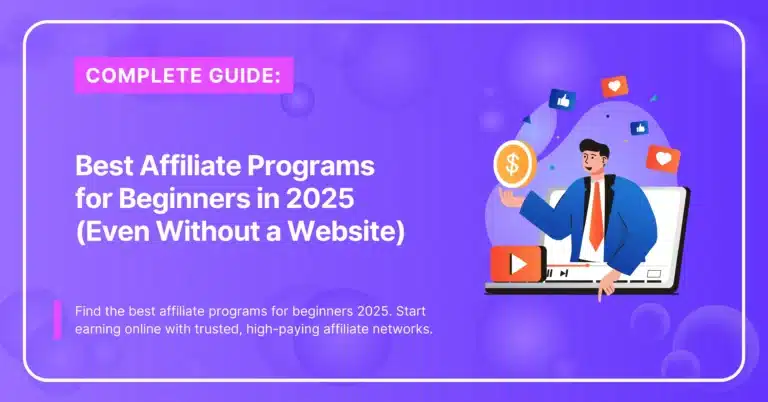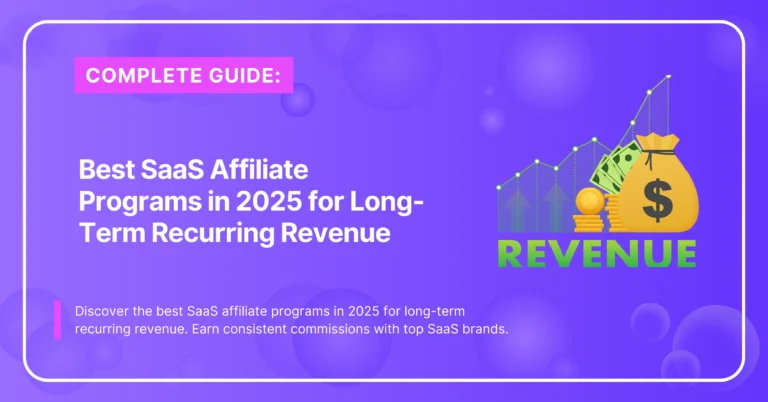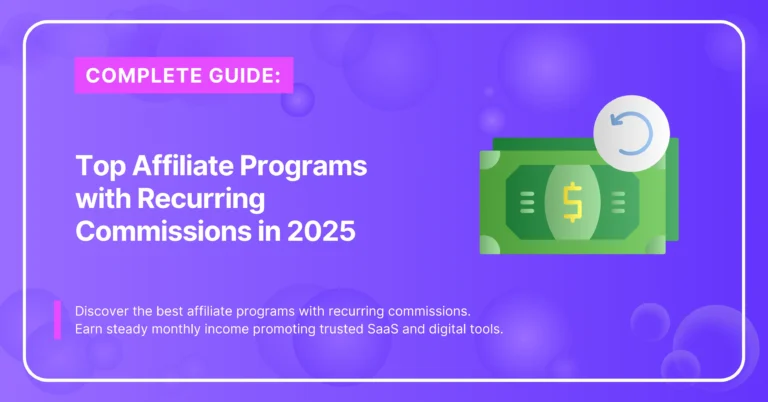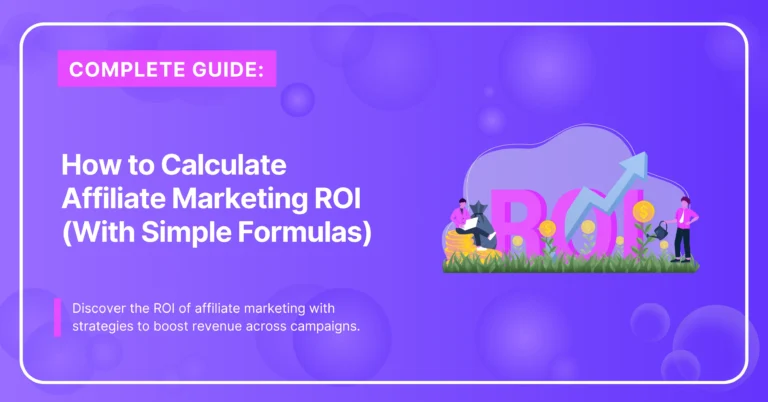Affiliate marketing is one of the most popular ways to earn online income, but turning clicks into profit isn’t always as easy as it seems.
In fact, while affiliate marketing now drives a significant share of global e-commerce sales, many beginners struggle to understand whether their efforts are truly paying off. That’s where affiliate marketing ROI comes in.

Make Money With AI
Join our Partner Programs!
Boost your reputation, drive revenue and grow your business with CustomGPT.ai.
ROI—return on investment—shows you how much money you make compared to what you spend. For affiliates, this means tracking more than just clicks.
The quality of your traffic, how well your content converts, and the lifetime value of customers all play a role in profitability.
Beginners often assume that more traffic equals more income, but the truth is that ROI depends on strategy, not just volume.
In this guide, we’ll break down the essentials of affiliate marketing ROI—from how to calculate it step by step, to using free tools for tracking, to optimizing your campaigns for sustainable profit.
What ROI Means in Affiliate Marketing
Return on investment (ROI) is a simple but powerful concept: it measures how much profit you make compared to what you spend. In affiliate marketing, ROI tells you whether your efforts are paying off or just generating clicks without real results.
Understanding affiliate marketing ROI is the first step to building a profitable strategy. According to a statistic cited by Affiliate Statistics. Marketing, about 81% of brands use affiliate programs.
Here are the main components you’ll come across:
- Earnings Per Click (EPC)
This shows how much money you earn, on average, every time someone clicks your affiliate link. If 100 people click your link and you earn $50 in commissions, your EPC is $0.50.
- Cost Per Acquisition (CPA)
This is the cost of getting one customer or lead. For affiliates who run ads, CPA is critical because it shows whether the commission covers the cost of acquiring a customer.
- Customer Lifetime Value (CLV)
Some affiliate programs, especially for software or subscriptions, reward you for customers who keep paying over time. CLV measures the total value a customer brings, not just the first purchase.
- Incrementality
Not every sale credited to an affiliate is truly “new.” Incrementality analysis helps determine whether those sales would have happened anyway, ensuring your ROI reflects genuine impact.
Tracking ROI Effectively in Affiliate Marketing
Knowing your numbers is the backbone of profitability. Many beginners think more clicks automatically mean more sales, but unless you track performance properly, it’s impossible to know whether your efforts are working.
- Clicks vs. Conversions
Clicks show interest, but conversions show results.
For example, if 1,000 people click your link but only 10 make a purchase, your conversion rate is 1%. A high click-through rate (CTR) with a low conversion rate often signals a mismatch between your content and the product you’re promoting.
- Earnings Per Click (EPC) in Practice
EPC gives you a quick way to compare campaigns. A blog post earning $0.40 per click is performing better than a social media campaign earning $0.15 per click, even if the latter has more traffic.
Tracking EPC helps you double down on what’s profitable.
- Attribution Models Matter
In the past, last-click attribution meant the last link someone clicked before buying got all the credit.
Today, tools like Google Analytics 4 use multi-touch attribution, which shows the role of blog posts, emails, or social media in nurturing the sale. This paints a more realistic picture of ROI and highlights hidden contributors.
- Tools for Beginners
You don’t need expensive software to start. Free tools like Google Analytics 4 let you track where your traffic comes from, how people behave on your site, and which campaigns convert best.
Link shorteners like Bitly or Pretty Links also provide basic click data to measure affiliate link performance. Tracking ROI isn’t just about collecting numbers—it’s about connecting them to decisions.
By consistently measuring clicks, conversions, and EPC while applying the right attribution model, you’ll build a clearer picture of your affiliate marketing ROI and spot exactly where to focus your energy for profit.
Step-by-Step ROI Calculation
Calculating ROI in affiliate marketing might sound complicated, but with a clear process, beginners can track results without advanced math. At its core, the formula is simple:
ROI = (Net Profit ÷ Total Investment) × 100
Here’s how to apply it step by step:
1. Gather Your Earnings
Start by looking at the total commissions you’ve earned from a campaign. For example, if you promoted a fitness app and earned $500 in commissions, that’s your revenue.
2. Add Up Your Costs
Even if you’re starting with free traffic, there are often hidden expenses: paid ads, email tools, content creation, or software subscriptions. If those costs add up to $200, that’s your investment.
3. Do the Math
- Subtract your costs from your revenue: $500 – $200 = $300 net profit.
- Now divide net profit by investment: $300 ÷ $200 = 1.5.
- Multiply by 100 to get your ROI: 150%.
This means that for every dollar you spent, you earned $1.50 back.
4. Factor in Long-Term Value
Beginners often stop at immediate profit, but ROI becomes more accurate when you include customer lifetime value (CLV).
For example, if the fitness app pays you recurring commissions of $20/month for each customer, your ROI will grow over time even if upfront profit looks small.
5. Compare Campaigns
The real power of ROI is comparison. Maybe your TikTok campaign delivered 120% ROI while your blog posts delivered 180%. This tells you where to focus your time and budget.
Calculating affiliate marketing ROI is about getting a true picture of whether your campaigns are profitable. By following these steps, you’ll quickly see what works, what doesn’t, and where to double down for better results.
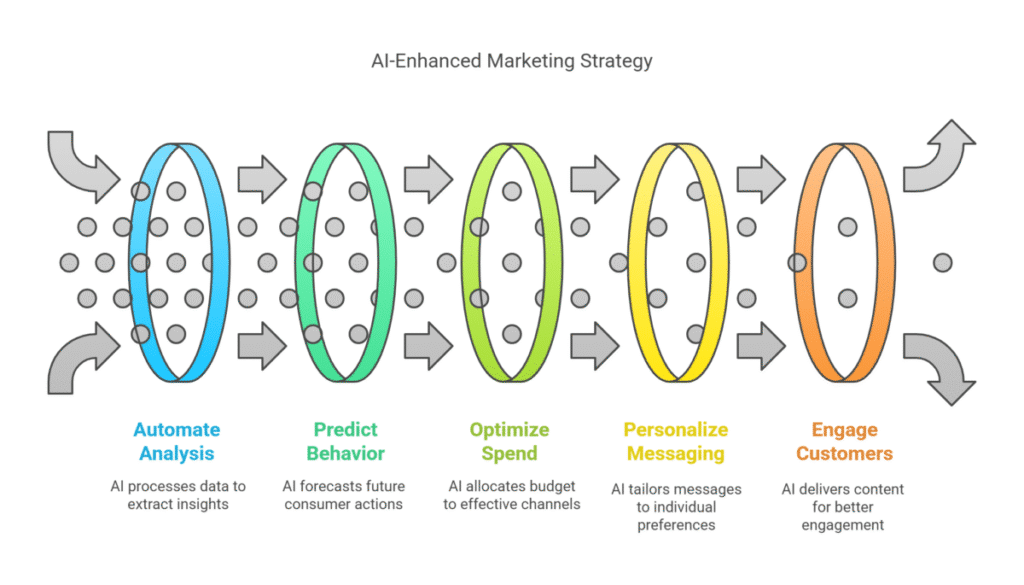
Optimizing Campaigns for Maximum Profitability
Once you know how to calculate ROI, the next step is improving it. Many beginners fall into the trap of chasing traffic numbers, but real success comes from optimizing campaigns so every click has the best chance of turning into profit.
Focus on Conversion Quality
A campaign with thousands of clicks but only a handful of sales is less effective than one with fewer clicks and steady conversions. Pay attention to your conversion rate alongside your earnings per click (EPC).
For instance, improving a landing page so that conversions rise from 1% to 2% can double your income without any extra traffic.
Test and Refine Content
Not all content performs equally. A product comparison article might drive more purchases than a generic blog post. The same goes for video reviews or tutorials on platforms like YouTube or TikTok.
By A/B testing headlines, calls-to-action, and link placement, you can uncover small changes that produce big improvements in ROI.
Reallocate Resources
If you’re investing money—whether in ads, tools, or content—redirect it to what’s working. For example, if your Instagram reels are delivering better conversion rates than your Facebook ads, shifting budget or effort there will maximize returns.
Build Trust First
Beginners often overlook that trust is what drives sales. Authentic reviews, transparency about affiliate relationships, and sharing real experiences make your recommendations more credible.
Audiences are far more likely to click and buy when they feel they can rely on you. Optimizing campaigns is not about chasing more traffic but about making smarter choices with the traffic you already have.
By focusing on quality conversions, refining content, and reallocating resources, you’ll steadily improve your affiliate marketing ROI and turn even small campaigns into consistent profit engines.
Using Analytics & Free Tools
You don’t need expensive software to start measuring performance. In fact, some of the most effective tools for tracking and improving results are free and beginner-friendly.
These tools help you understand where your traffic is coming from, how people interact with your content, and which campaigns actually lead to conversions.
Google Analytics 4
Google Analytics 4 (GA4) is one of the most powerful free tools for affiliates. It tracks user journeys across devices, showing not just clicks but also how long visitors stay, which pages they view, and whether they complete purchases.
This helps you see which campaigns or content types drive the most value.
Link Tracking Tools
Shorteners like Bitly or plugins like Pretty Links make it easy to track clicks on your affiliate links. You’ll know which platforms bring the most engagement and whether a blog post, email, or social media post is delivering better results.
According to InboundBlogging’s recent affiliate marketing statistics, 67% of affiliate marketers use social media to promote offers.
Heatmaps and User Behavior Tools
Platforms like Hotjar offer free versions that show you where people click, scroll, or drop off on a page. This is valuable for optimizing landing pages and removing friction that might hurt conversions.
Content Creation Helpers
Free tools like Canva (for graphics), Hemingway (for readability), or WordPress.com (for blogging) help you produce professional content without upfront costs. High-quality, consistent content builds trust and increases conversions over time.
When used together, these tools give you a clearer picture of performance without breaking your budget.
The key is to track consistently and refine based on what the data tells you. With a little practice, these free resources can help you boost conversions, build trust, and steadily improve your affiliate marketing ROI while keeping costs at zero.
Advanced Tips for Boosting ROI
Once you’ve mastered the basics, there are advanced strategies that can take your affiliate marketing efforts to the next level.
These techniques focus on precision, personalization, and smarter use of data, helping you move beyond surface-level metrics.
- Predictive Analytics
Instead of waiting to see what works, predictive analytics uses historical data to forecast performance. For example, it can identify which audience segments are most likely to convert, allowing you to target them with tailored content.
Even free versions of tools like Google Analytics offer predictive insights that highlight potential opportunities.
- Behavioral Segmentation
Not all clicks are equal. Segmenting audiences by behavior—such as time spent on site, repeated visits, or engagement with specific content—lets you personalize campaigns.
For instance, someone who watches a full product demo video is more likely to convert than someone who only skims a blog post.
- Dynamic Offer Optimization
Some platforms let you automatically adjust offers in real time based on user activity. If a visitor is returning to the same product page multiple times, showing them a limited-time discount can nudge them toward purchase.
- Automation and AI Tools
AI-powered tools can optimize campaigns while you focus on strategy. For example, automation can test different calls-to-action or shift budget toward the highest-performing channels in real time.
While these systems work best when paired with human oversight, they significantly reduce wasted effort and improve efficiency. These advanced approaches aren’t mandatory for beginners, but they show where the industry is heading.
By gradually adopting predictive analytics, segmentation, and automation, you’ll uncover deeper insights, make smarter decisions, and steadily grow your affiliate marketing ROI beyond what’s possible with basic tracking alone.

Case Studies & Real-World Examples
Theory is helpful, but real-world examples make ROI in affiliate marketing easier to understand. Looking at how different companies approach affiliate campaigns shows what works—and what doesn’t.
E-commerce Example
Amazon’s affiliate program is one of the largest in the world, and it highlights the power of scale. Affiliates who focus on product review sites or niche blogs often see steady commissions because Amazon’s wide range of products covers almost every consumer need.
Even small content creators can earn consistent income by targeting long-tail keywords like “best budget headphones under $50” and linking directly to products. The lesson? Matching audience intent with specific offers leads to better ROI.
SaaS Example: CustomGPT.ai
Unlike e-commerce programs that offer one-time payouts, software-as-a-service (SaaS) affiliate programs often pay recurring commissions, which means you earn month after month as long as your referral stays subscribed.
One standout example is the CustomGPT.ai Affiliate Program.
CustomGPT.ai is a platform that lets businesses and creators build custom AI chatbots tailored to their audience. For affiliates, it represents one of the most lucrative opportunities in the SaaS space because:
- Recurring Commissions: Affiliates earn up to 20% recurring commissions for two full years on every referral. That means even a single customer can generate ongoing income for 24 months, creating long-term, predictable revenue.
- High-Demand Market: AI adoption is booming across industries, and companies are actively searching for tools to improve customer engagement, automate support, and scale content creation. This makes CustomGPT.ai a product that’s not only easy to promote but also in high demand.
- Conversion-Friendly Use Cases: Affiliates who showcase real examples—like chatbots for customer service, lead generation, or e-commerce—can attract qualified leads who are far more likely to subscribe and stick with the platform.
- Beginner-Friendly Promotion: Because CustomGPT.ai solves real business problems, it resonates with audiences ranging from entrepreneurs to marketing teams, giving affiliates a wide range of niches to target.
For affiliates looking to maximize affiliate marketing ROI, CustomGPT.ai offers the best of both worlds: a product that’s easy to promote, backed by growing demand, and paired with generous, long-term commissions.

Make Money With AI
Join our Partner Programs!
Boost your reputation, drive revenue and grow your business with CustomGPT.ai.
FAQ
What are the key metrics to track for improving affiliate marketing ROI?
The most important metrics include:
Click-through rate (CTR): How many people click your affiliate links.
Conversion rate (CR): How many of those clicks turn into sales or leads.
Revenue per click (RPC) / Earnings per click (EPC): The average income you earn per click.
Customer lifetime value (CLV): How much a customer is worth over time, especially in SaaS programs with recurring commissions.
Cost per acquisition (CPA): How much it costs you to get one paying customer.
By combining these numbers, you get a clearer picture of how well your campaigns are performing and whether they’re delivering a strong ROI.
How does multi-touch attribution improve ROI calculations?
Traditional last-click attribution gives all credit to the final click, while multi-touch attribution spreads credit across the customer journey—blog posts, emails, or social media interactions. This ensures affiliates know which efforts truly drive conversions and can focus on the most valuable channels.
What are the best tools for tracking and analyzing affiliate performance?
Google Analytics 4: Tracks clicks, conversions, and customer journeys.
Impact.com or Refersion: Manage affiliate links and commissions.
Optimizely: Run A/B tests to optimize headlines, calls-to-action, and content layouts.
Hotjar: Use heatmaps to see how visitors interact with your pages.
These tools give you a deeper understanding of performance so you can make smarter, data-driven adjustments.
What role does customer lifetime value (CLV) play in affiliate profitability?
CLV measures the total revenue a customer generates over time. For affiliates, this is especially important in programs like CustomGPT.ai, where referrals pay commissions for up to two years, making CLV a key factor in building sustainable income.
How can beginners use predictive analytics in affiliate marketing?
Predictive analytics uses data to forecast which audiences or campaigns are most likely to convert. Beginners can use these insights to spot patterns, such as seasonal demand or audience behavior, and adjust campaigns proactively to boost ROI.
Conclusion
Affiliate marketing ROI isn’t just about clicks; it’s about building strategies that turn traffic into long-term profit. By tracking the right metrics, optimizing campaigns, and leveraging tools that reveal real performance, beginners can avoid common pitfalls and grow with confidence.
If you’re ready to put these strategies into action, join the CustomGPT.ai Affiliate Program today.
Earn up to 20% recurring commissions for two years while promoting a platform that businesses and creators already trust. It’s your chance to turn knowledge into profit—without guesswork.



